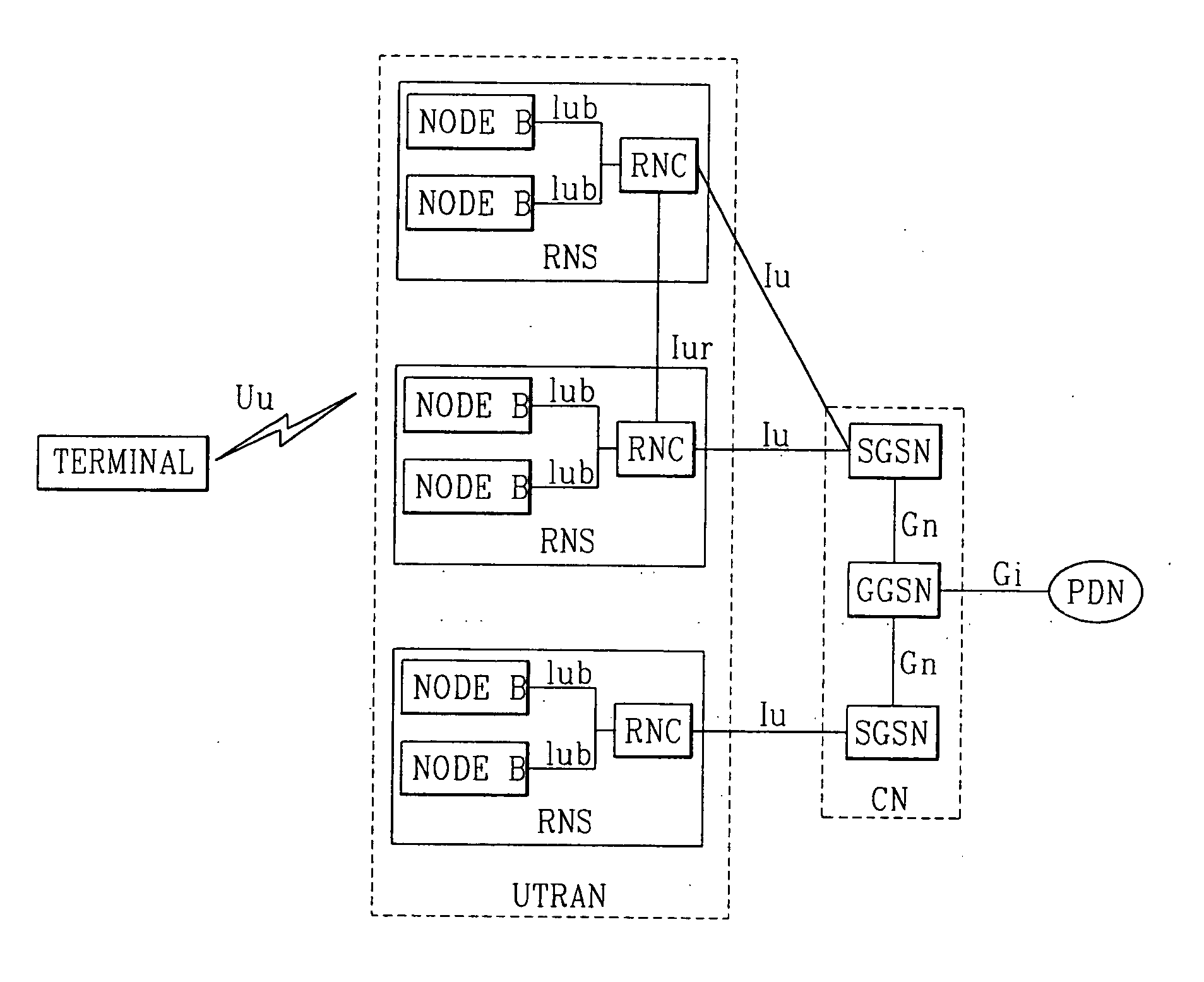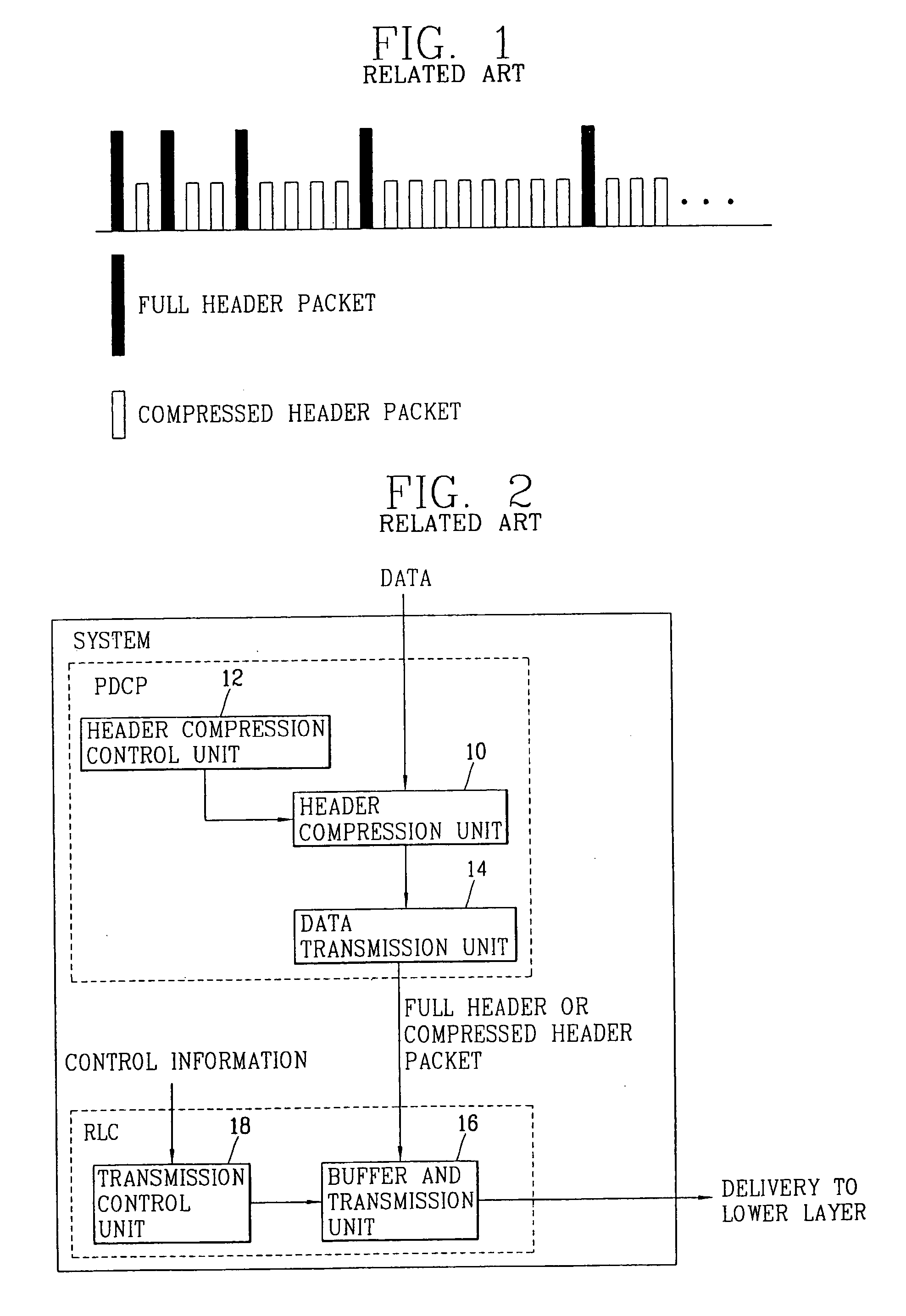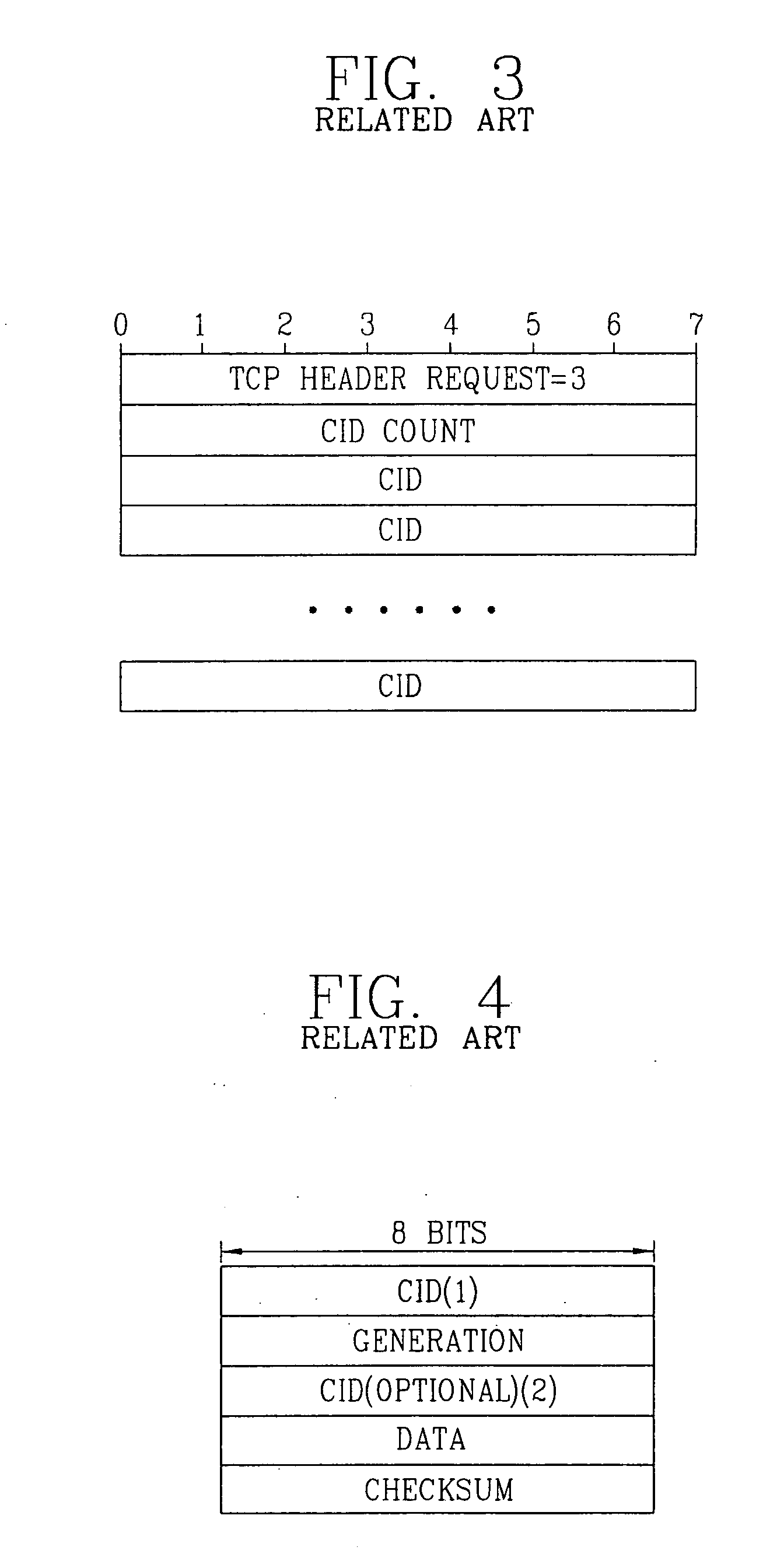Method for transmitting packet data in communication system
a communication system and packet data technology, applied in the field of transmission of packet data in a communication system, can solve the problems of reducing the efficiency of recovery context, and reducing the number of requests
- Summary
- Abstract
- Description
- Claims
- Application Information
AI Technical Summary
Benefits of technology
Problems solved by technology
Method used
Image
Examples
first embodiment
[0152] Referring to the first embodiment, the header compression layer controls which packets to compress based on feedback information from the data link layer which indicates whether a previously transmitted full-header packet has been discarded (it means that the transmission was failed). If so, the next packet in the stream may be transmitted as full-header packets. If not, the receiver may fail to establish the context of header information of a packet stream with the first full-header packet or the successive packet with compressed header and may not recover the header information by the compressed-header packet. Even though the receiver might establish the context of header information of a packet stream with the first full-header packet, the header compression layer of the transmitter sends a full-header packet whenever the lower layer reports that it discarded a packet. Through this feedback information of the lower layer, the invention is therefore able to minimize the num...
second embodiment
[0154] Referring to the second embodiment, the header compression layer controls which packets to compress based on feedback information from the data link layer which indicates whether a previously transmitted full-header packet has been successfully received. If so, the remaining packets in the stream may be transmitted as compressed-header packets. If not, one or more full-header packets are intermittently transmitted until one is successfully received. The remaining packets are then transmitted as compressed-header packets. Through this feedback information of the lower layer, the invention is therefore able to minimize the number of full-header packets transmitted in any given data stream.
[0155] In other words, in compressed non-TCP (Compression Slow Start), even if the receiver (it means the PDCP of the receiver) did not request the transmission of compressed-header packet instead of transmitting full-header packet, if the RLC SDU (same as the PDCP PDU) is removed from RLC buf...
PUM
 Login to View More
Login to View More Abstract
Description
Claims
Application Information
 Login to View More
Login to View More - R&D
- Intellectual Property
- Life Sciences
- Materials
- Tech Scout
- Unparalleled Data Quality
- Higher Quality Content
- 60% Fewer Hallucinations
Browse by: Latest US Patents, China's latest patents, Technical Efficacy Thesaurus, Application Domain, Technology Topic, Popular Technical Reports.
© 2025 PatSnap. All rights reserved.Legal|Privacy policy|Modern Slavery Act Transparency Statement|Sitemap|About US| Contact US: help@patsnap.com



